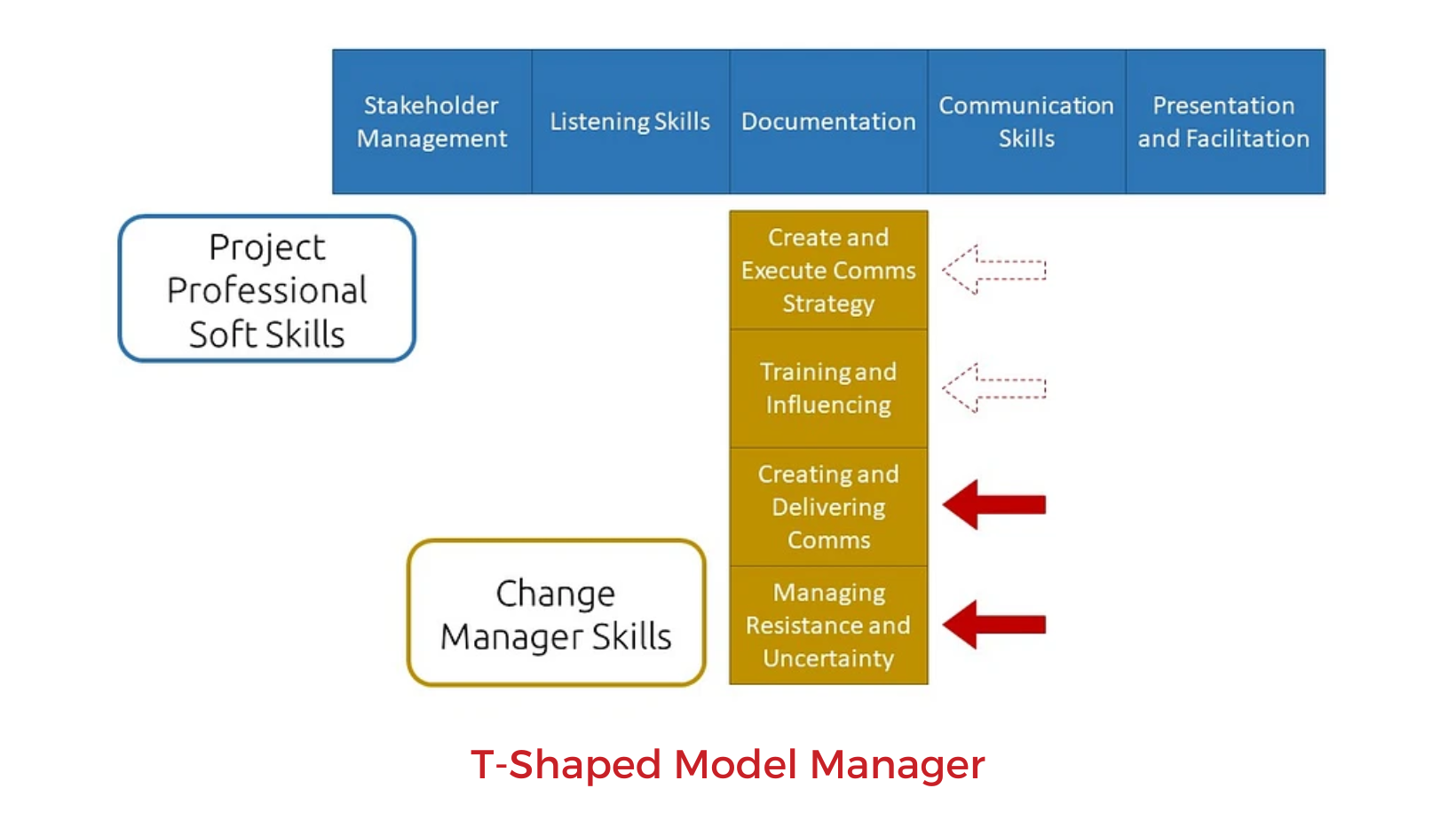T-shaped managers are highly sought after by most organisations. Due to a shortage of intelligent resources, several businesses have attempted to take advantage of this underutilised resource by centralising knowledge management operations or making significant investments in knowledge management.
The T-Shaped management model is recommended to modify managers’ behaviour and time use. In this post, we’ll outline the characteristics of T-shaped managers and how they add value to their organisations.
Table of Contents
ToggleT-shaped Managers, Who Are They?
The ability of a new kind of CEO to stay updated is as essential as the T-shaped management. This executive has to be able to operate outside of the typical corporate structure to openly disseminate information across the organisation (the “T” component of the diagram), all while retaining a steadfast dedication to the success of each business unit (the vertical position).

T-shaped managers are highly sought after by most organizations.
Successful T-shaped managers must learn to live with and, eventually, thrive within the tension caused by this dual obligation. Any T-shaped manager responsible for the operating unit must deal with this tension, even though it is most intense for heads of business units.
For further reading about T-Shaped articles, click here.
T-Shaped Managers In Creating Corporations Benefits
Effective T-shaped managers will be advantageous to businesses of virtually any size. Still, they are essential in huge enterprises with a lot of autonomy. Increasing responsibility, encouraging innovation, and sensitivity to regional market circumstances are all benefits of allowing business units to be more independent.

T-Shaped managers play an essential role in the corporation.
T-shaped managers are responsible for creating vertical value for their companies by delivering outstanding outcomes from their business units. These outcomes should be the top management objective for any organisation that strongly focuses on business unit responsibility.
5 Methods of T-Shaped Managers in Creating Advantages
They generate horizontal value in five ways, moving up the value-added ladder from using the available resources and expertise to exploiting the opportunities that have not been discovered.
- Increasing Efficiency Through the Transfer of Best Practices: Managers are almighty people who know everything to run the departments. Receiving recommendations and acknowledgement from other experts could help them practise more efficiently for their unit performance. Practice is a part of the T-Shaped model managers’ horizontal skill set.

Receiving recommendations is standard for T-Shaped managers.
- Improving the Quality of Decisions Through Peer Advice: Another method for managerial decision-making is to build an expert team advising on the latest determinations. The experienced recommendations would improve the quality of developments, and bring more value to the company.
- Growing Revenue Through Shared Expertise: T-Shaped managers are full-skilled in their favoured expertise, which can partly affect the corporation’s revenue from their team management comprehensive. The team members will share their experiences and contribute together for a better working experience.
- Developing New Business Opportunities Through the Cross-Pollination of Ideas: Every manager has their lens in how they view the business. It is more effective in terms of ideas contributing as there are various aspects which companies can gather and evaluate from those ideas into new business opportunities.
- Making Bold Strategic Moves Through the Promise of Well-Coordinated Implementation: Teamwork is one of the proficient skills which T-Shaped managers practice. Implementing group work can improve performance and solve many problems.

Teamwork is one of the proficient skills that benefits corporations.
4 Values of T-Shaped Managers in Bringing to the Corporation
T-shaped managers should be able to figure out how to handle the inherent conflict in the idea. Many businesses have achieved this by encouraging and correcting horizontal management behaviour together.

4 Values of T-Shaped Managers in Bringing to Corporations.
- Create clear incentives: The capacity of business unit managers to accomplish particular performance goals is one of the criteria used to evaluate them. However, they also receive rewards and promotions depending on how successfully they and their colleagues communicate information with people who are not associated with the department in which they work.
- Develop economic transparency: T-shaped model managers performing their jobs effectively not only aid business unit borders; they also look for suggestions. And one way to promote such requests is through corporatewide internal-benchmarking systems, which prompt managers of underperforming divisions to ask for help.
- Formalise cross-unit interactions: Institutionalising cross-unit behaviour can help sustain something that might remain ad hoc. The difficulty is to avoid creating the bureaucracy that working across units is meant to cut through.

There are many advantages that managers bring to corporations.
- Curb cross-unit interactions: T-shaped managers need to know that it is acceptable and sometimes wise to refuse requests from other departments for their time or staff.
Conclusions
T-Shaped managers have brought many benefits to companies through their skills, experiences and expertise. Those values advance the business and positively impact current workers, who can learn, teach, and collaborate. Hence, they are becoming more and more valuable, which human resources are demanding in this type of employee.
Université Libérale de Paris (also called Paris-U) is proud to be the first university in France to offer the T-Shaped learning model, which helps students in their career development. For more information about the school, read here.
Reference
HBR. (2014, August). Introducing T-Shaped Managers: Knowledge Management’s Next Generation. Harvard Business Review.




